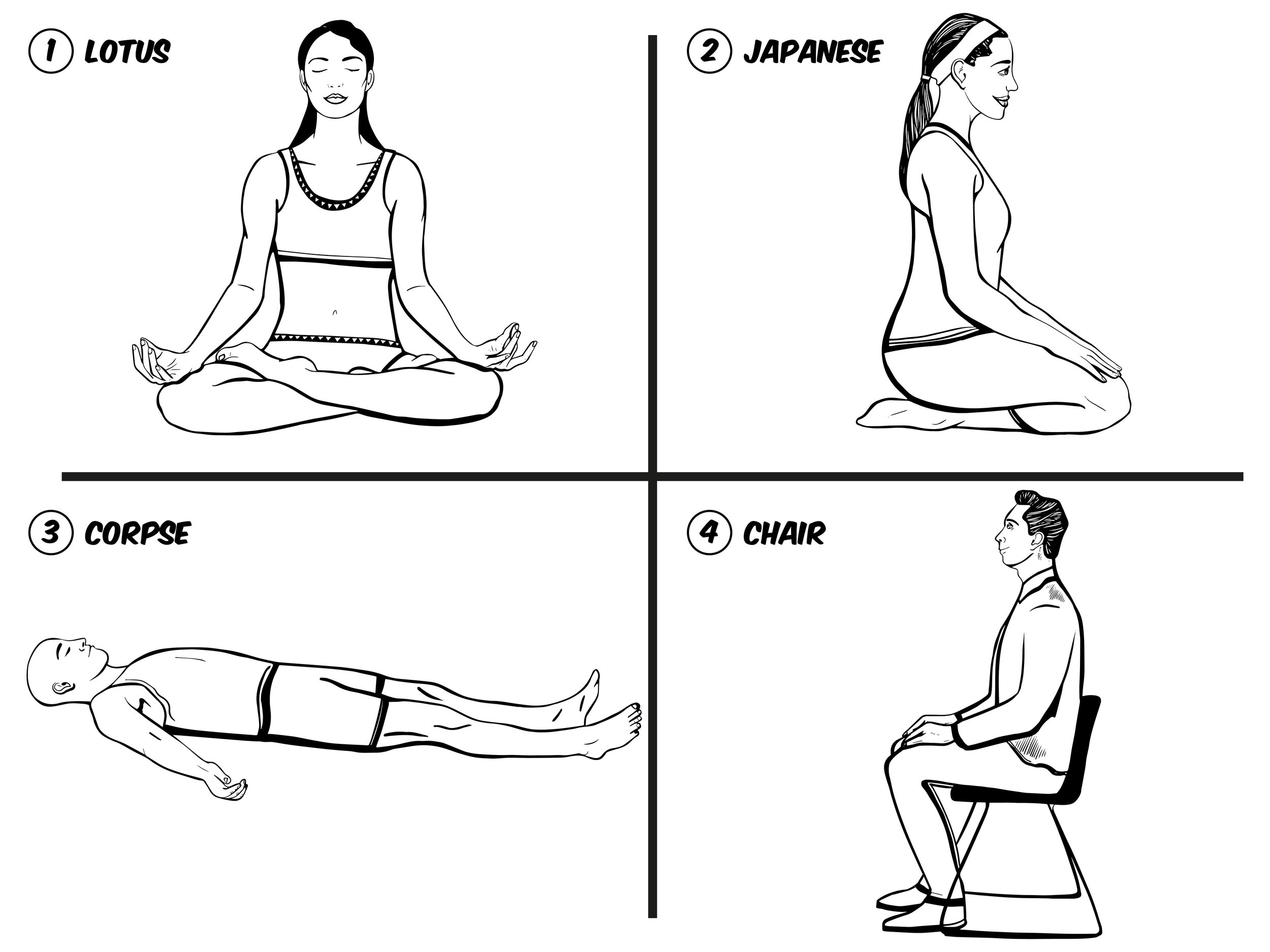Posture is perhaps the first aspect of your meditation practice that demands consideration, as learning to sit properly is one of the most essential skills of meditation.
A good posture is one that provides a balance between being comfortable and alert, and one that you could easily maintain over an extended period of time. The essence of good posture is the ability to sit upright, not too hunched over.
There exist a variety of poses that enable good posture for the meditator. Here are the four most basic poses:
1. Lotus pose
Lotus pose is the most advanced meditation pose, and it requires some strength and flexibility.
Lotus pose works like this: From a seated floor position, bend your left knee and bring your left heel to press on the perineum with the sole of the foot against the inner right thigh. Then bring your right heel and place it atop the left heel.
2. Japanese pose
Japanese pose, also called seiza pose, is a traditional Japanese style of sitting.
Japanese pose works like this: place your knees on the floor and rest your butt on the backs of your feet so that the tops of your feet are flat on the floor.
3. Corpse Pose
Corpse pose, often called savasana pose, is often performed at the end of series of yoga movements. But you can meditate in corpse pose too — so long as you don't fall asleep!
Corpse pose works like this: lay with your back on the floor with your head comfortably resting and your your legs and arms outstretched. Allow your legs and ams to fall limp, palms faced up or down, whichever is most comfortable.
4. Chair pose
Chair pose is particularly suited for westerners, and was recommended by paramahansa yogananda, author of Autobiography of a Yogi.
Chair pose works like this: Sit in a chair with your spine straight, not touching the back of the chair, with your hands resting upon your lap. Tilt the pelvis forward and the upper back will naturally straighten and strengthen. Keep the shoulders relaxed.
While most modern meditators choose to sit in a chair, some younger or more advanced practitioners may choose to sit on the floor. Each of these positions the meditator directly on the floor.

